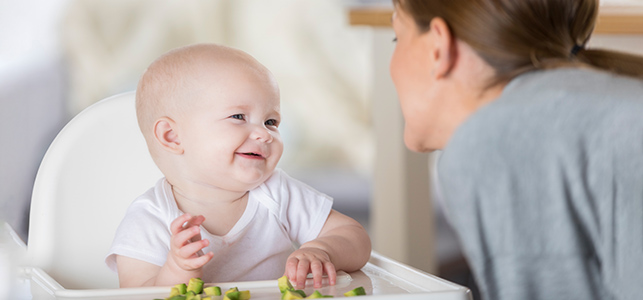
Parents often wonder how and when to introduce solid foods in their baby’s diet. One approach is baby-led weaning. Pediatrician Dr. Elizabeth Wolf answers common questions about what it is, why some parents choose it, and more.
Weaning refers to gradually transitioning from a diet consisting completely of breast milk or formula, to one that involves solid foods. Baby-led weaning involves watching for signs that baby is developmentally ready for foods the rest of the family is eating and allowing them to feed themselves. It’s different from the common approach of feeding babies purees by spoon.
Signs of readiness for solid foods usually occur around 6 months and include:
Proponents of baby-led weaning point to several potential benefits. These include:
The great news is that babies can eat many of the same foods the rest of the family is eating. They just may need to be cooked longer or cut smaller. Make sure foods that are offered are soft enough to mash on the roof of the mouth with the tongue, such as:
You could also offer some foods with normally pureed textures, like applesauce, yogurt or oatmeal. If baby has trouble at first, try loading the spoon and handing it to them to bring to their mouth.
Important: Avoid foods that are choking hazards such as nuts, hot dogs and raw vegetables.
Don’t worry if not much food makes it into baby’s mouth at first. Most of their nutritional needs are met with breast milk or formula in the beginning, so they can focus on exploring and practicing with solid foods. Be prepared to embrace the mess – and grab your camera for the adorable photo-ops.
Some babies thrive with this approach, while others aren’t ready to take the lead until they’re a bit older. Your pediatrician is a great resource if you have questions about what’s best for your baby.